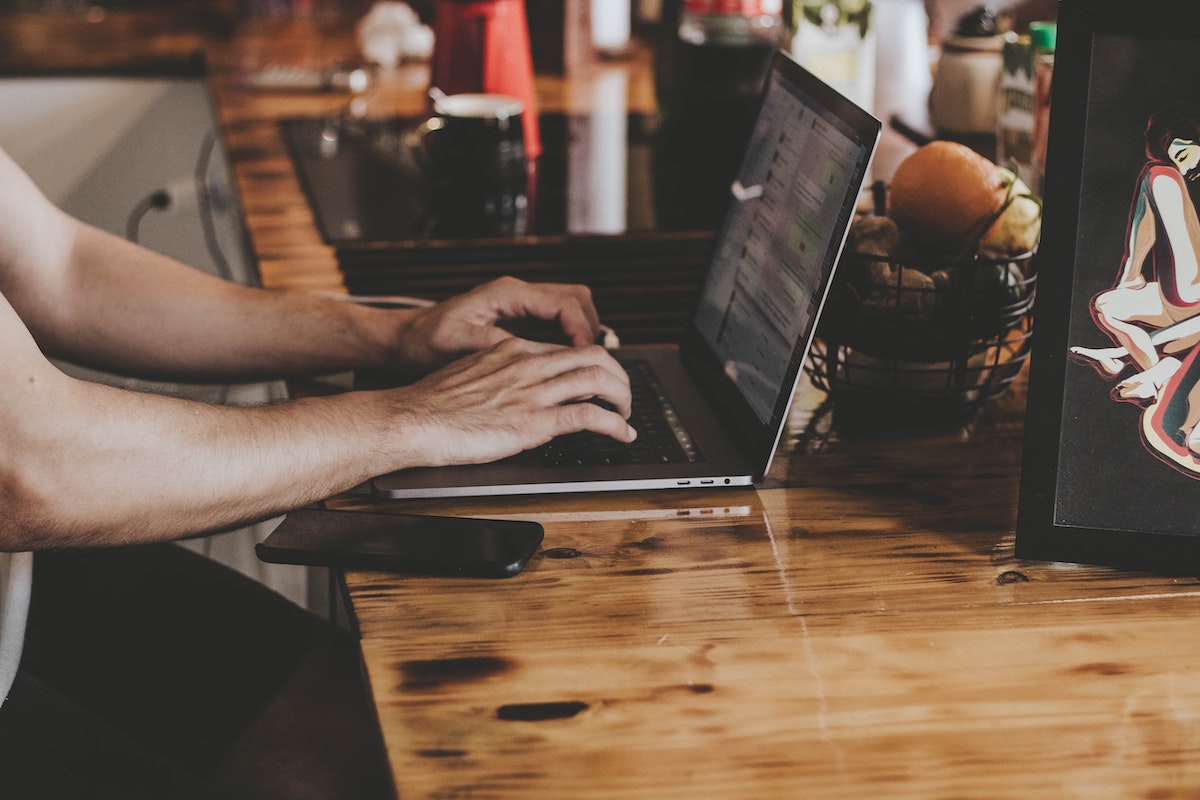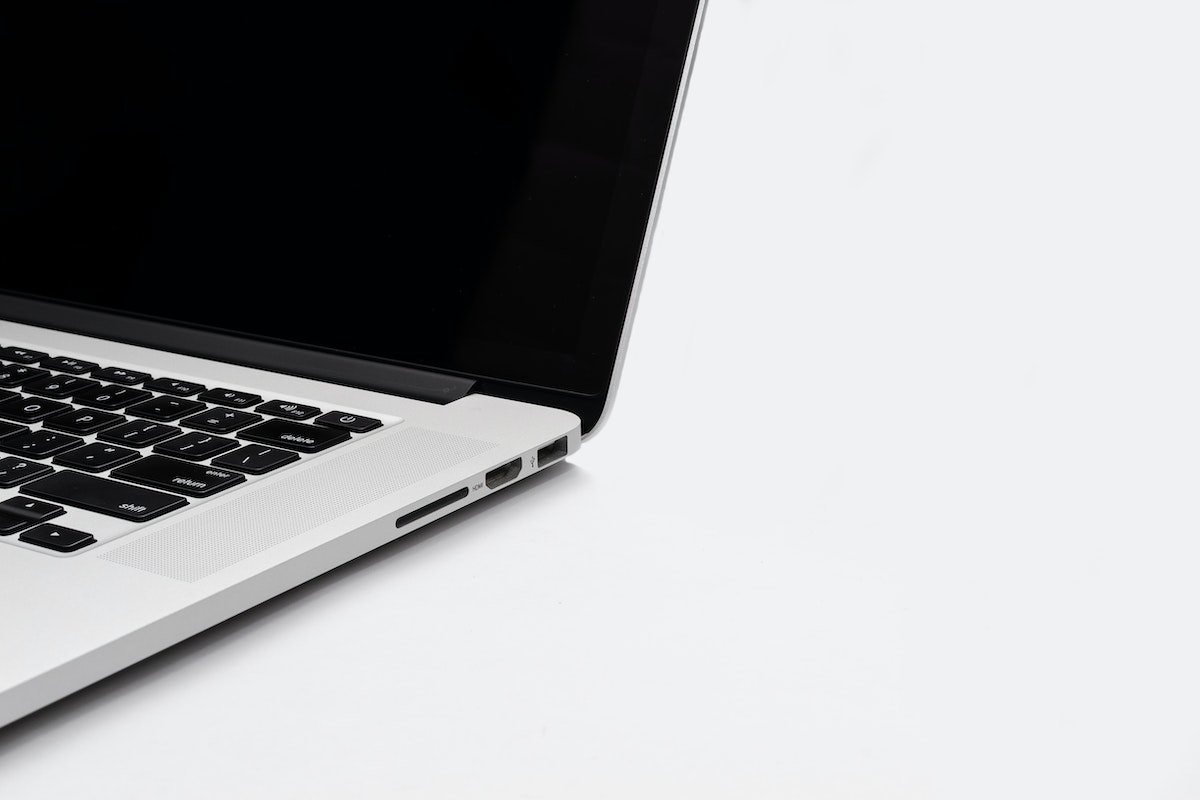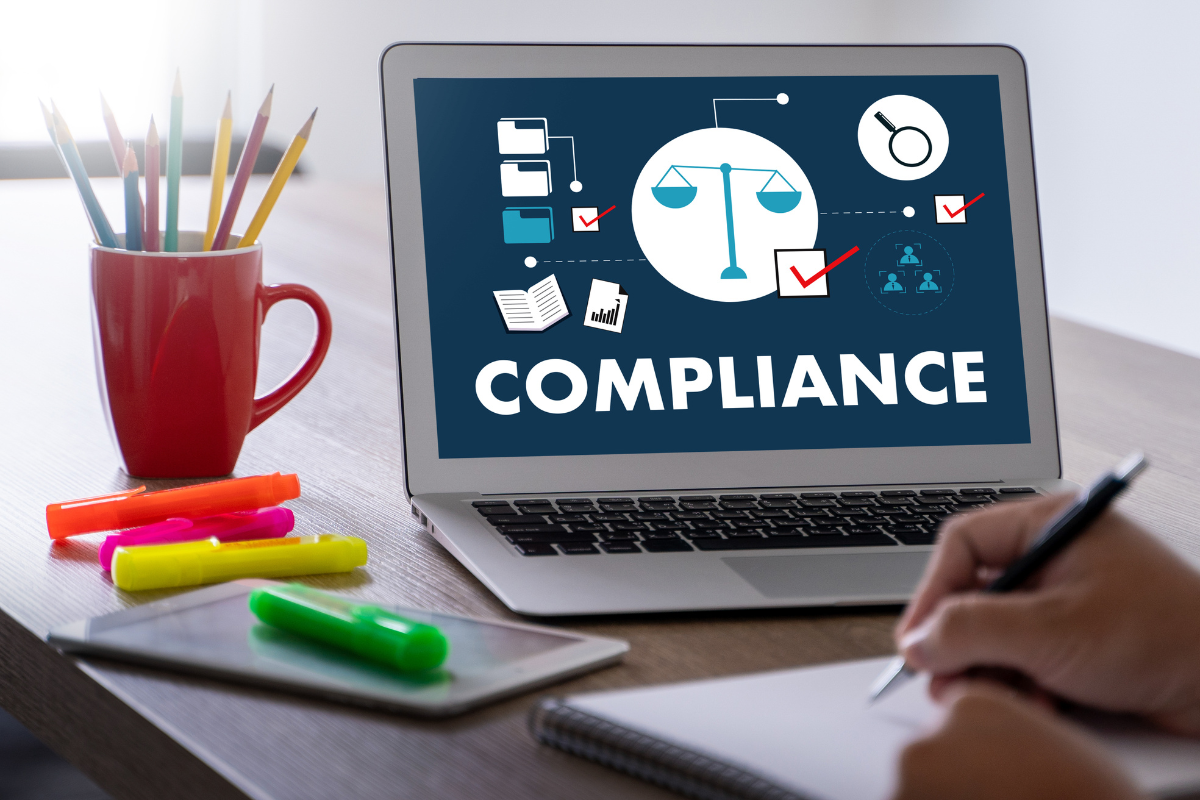Are you struggling to free up space on your MacBook?
One of the easiest ways to do that is to delete apps that you no longer use but how to delete apps on MacBook?
Don’t worry, it’s a simple process that we’ll walk you through step by step.
First, let’s go over the basics. To uninstall apps on a Macbook, you’ll need to use the Finder app.
This is the app that allows you to navigate through your files and folders. Once you’ve opened Finder, you can easily find the app you want to delete by clicking on the “Applications” folder.
From there, you can select the app you want to uninstall and move it to the Trash. But wait, there’s more!
Table of Contents
ToggleUnderstanding The Basics
If you’re new to using a MacBook or Mac computer, you may be wondering how to delete apps. Understanding the basics of Mac applications, the Dock, and the difference between Mac App Store and downloaded apps can help you navigate the process.
About Mac Applications
Mac applications are programs that you can install and run on your Mac computer.
They can be downloaded from the Mac App Store or from other websites. When you install an application, it is typically added to your Applications folder, which you can access through Finder.
Understanding the Dock
The Dock is a bar of icons that sits at the bottom or side of your screen. It provides quick access to your most frequently used applications and files.
You can add or remove icons from the Dock by dragging and dropping them.
To remove an app from the Dock, simply click and hold on the app icon until a menu appears, then select “Remove from Dock.” This will remove the app from the Dock, but not from your computer.
Mac App Store Vs Downloaded Apps
The Mac App Store is a digital distribution platform for Mac applications.
It is built into macOS and provides a convenient way to browse, purchase, and download apps.
When you download an app from the Mac App Store, it is automatically installed on your computer and added to your Applications folder.
Downloaded apps, on the other hand, are applications that you download from other websites or sources.
These apps may need to be installed manually and may not be as secure as those downloaded from the Mac App Store.
To delete an app that you downloaded from the Mac App Store, simply drag the app icon from your Applications folder to the Trash.
If you downloaded the app from another source, you may need to follow specific instructions provided by the app developer to uninstall it.
By understanding the basics of Mac applications, the Dock, and the difference between Mac App Store and downloaded apps, you can confidently delete apps from your MacBook or Mac computer.
How To Delete Apps On Macbook
If you have a Macbook and you’re looking to free up some space, deleting apps you no longer use is a great way to do it.
Here’s how to delete apps on Macbook:

- Open Finder and click on “Applications” in the sidebar.
- Find the app you want to delete and drag it to the Trash. Alternatively, you can right-click on the app and select “Move to Trash.”
- Once the app is in the Trash, right-click on the Trash icon in the dock and select “Empty Trash” to permanently delete the app.
It’s important to note that some apps may have associated files that also need to be deleted.
To ensure that you’ve completely removed the app and all of its associated files, you can use a third-party app like AppCleaner or CleanMyMac.
To use AppCleaner:
- Download and install AppCleaner.
- Open AppCleaner and drag the app you want to delete to the AppCleaner window.
- AppCleaner will find all associated files and display them in a list. Review the list and click “Delete” to remove the app and all associated files.
To use CleanMyMac:
- Download and install CleanMyMac.
- Open CleanMyMac and click on “Uninstaller” in the sidebar.
- Find the app you want to delete and click “Uninstall.” CleanMyMac will find all associated files and remove them along with the app.
That’s it! With these simple steps, you can easily delete apps on your Macbook and free up some valuable space.
Deleting Apps Using Launchpad
If you want to delete apps on your MacBook, you can use Launchpad. Launchpad is a built-in feature of macOS that allows you to view and open all the apps installed on your computer.
Here’s how you can delete apps using Launchpad:
Accessing Launchpad
You can access Launchpad in a few different ways:
- Click on the Launchpad icon in your Dock. It looks like a rocket ship.
- Pinch your thumb and three fingers together on your trackpad.
- Press the F4 key on your keyboard.
Once you have Launchpad open, you’ll see all of your installed apps.
Deleting Apps From Launchpad
To delete an app using Launchpad, follow these steps:
- Click and hold on the app you want to delete. The app icons will start to jiggle.
- Click on the delete button that appears on the app icon. It looks like an “x.”
- Confirm that you want to delete the app by clicking on “Delete” in the pop-up window.
- The app will be moved to the Trash. You can empty the Trash to free up space on your computer.
That’s it! You’ve successfully deleted an app using Launchpad. Repeat these steps for any other unwanted apps you want to remove from your MacBook.
Deleting Apps Using Finder
Deleting apps from your MacBook is a quick and easy process.
Here’s how to do it using Finder:
Accessing Finder
To access Finder, click on the Finder icon in your dock or press Command + Spacebar to open Spotlight and type in “Finder.”
Once you have opened Finder, you can navigate to the Applications folder, where all of your installed apps are stored.
Deleting Apps From Finder
To delete an app from Finder, simply select the app you want to delete and drag it to the Trash bin in your dock.
Alternatively, you can right-click on the app and select “Move to Trash.”
Emptying The Trash Bin
Once you have moved the app to the Trash bin, it is not completely deleted from your MacBook yet.
To fully delete the app, you need to empty the Trash bin. To do this, right-click on the Trash bin in your dock and select “Empty Trash.”
You will be prompted to confirm that you want to permanently delete the app. Click “Empty Trash” to confirm.

Note that some apps may require you to enter your administrator username and password to delete them.
If you are unable to delete an app, it may be because it is a required app for your MacBook’s operating system. In this case, it is best not to delete the app as it may cause issues with your MacBook’s performance.
In summary, deleting apps from your MacBook using Finder is a straightforward process.
Access Finder, select the app you want to delete, move it to the Trash bin, and empty the Trash bin to permanently delete the app.
Using Third-Party Uninstallers
If you want to completely remove an app from your MacBook, including all its associated files and folders, you can use a third-party uninstaller.
In this section, we’ll discuss what third-party uninstallers are and how to use them.
Understanding Third-Party Uninstallers
Third-party uninstallers are software applications that help you uninstall apps and all their associated files and folders.
These apps are different from the default uninstaller that comes with your MacBook because they are designed to remove all traces of the app you want to uninstall.
When you use a third-party uninstaller, you don’t have to worry about leftover files or folders.
These apps scan your system for all files and folders associated with the app you want to uninstall and remove them. This ensures that your system stays clean and free of clutter.
Using AppCleaner
One of the most popular third-party uninstallers for MacBook is AppCleaner. AppCleaner is a free app that helps you uninstall apps and all their associated files and folders.
Here’s how to use it:
- Download and install AppCleaner on your MacBook.
- Launch AppCleaner.
- Drag the app you want to uninstall to the AppCleaner window.
- AppCleaner will show you all the associated files and folders. Review the list to make sure you want to delete all of them.
- Click the Remove button to uninstall the app and all its associated files and folders.
AppCleaner is easy to use and helps you keep your MacBook clean and free of clutter.
You can also use other third-party uninstallers like CleanMyMac X, AppZapper, and iTrash.
Managing Storage Space
Are you running out of storage space on your MacBook?
Do you want to learn how to manage your storage space effectively? In this section, we will discuss two ways to manage storage space on your MacBook: Understanding Storage Space and Using Mac Cleaner.
Understanding Storage Space
Before you start managing your storage space, it’s essential to understand how it works.
Your MacBook has a limited amount of storage space, which is divided into two categories: System and User.
The System category includes your operating system, pre-installed apps, and other essential files. The User category includes your personal files, such as documents, photos, videos, and music.
Over time, your MacBook can accumulate junk files, such as temporary files, cache files, and preference files.
These files can take up valuable storage space and slow down your MacBook’s performance.
It’s essential to remove these files regularly to free up space and optimize your MacBook’s performance.
Using Mac Cleaner
Mac Cleaner is a third-party app that can help you manage your storage space effectively.
It’s designed to scan your MacBook for junk files, large files, and duplicates. Once the scan is complete, you can review the results and remove the files you don’t need.
Mac Cleaner can also help you manage your data by organizing your files into categories, such as Documents, Photos, Videos, and Music.

This feature can help you identify large files and remove them to free up space.
In addition to managing your storage space, Mac Cleaner can also help you manage your library and preference files.
These files can take up valuable space and slow down your MacBook’s performance. Mac Cleaner can help you remove these files safely and optimize your MacBook’s performance.
In conclusion, managing your storage space is essential to keep your MacBook running smoothly.
Understanding how your storage space works and using tools like Mac Cleaner can help you free up space and optimize your MacBook’s performance.
Understanding App Subscriptions
About App Subscriptions
App subscriptions are a way for developers to monetize their apps. With an app subscription, you pay a recurring fee to access premium features or content within the app.
Some apps also offer free trials, which allow you to try out the premium features before committing to a subscription.
App subscriptions can be managed through the Mac App Store or the app’s website.
When you subscribe to an app, you will be charged automatically at the end of each billing period until you cancel the subscription.
Managing App Subscriptions
To manage your app subscriptions on your MacBook, follow these steps:
- Open the App Store app on your MacBook.
- Click on your profile picture in the bottom left corner of the screen.
- Click on “View Information” in the dropdown menu.
- Enter your Apple ID password if prompted.
- Scroll down to the “Subscriptions” section and click “Manage.”
From here, you can view all of your active app subscriptions and cancel any that you no longer want.
If you don’t see the subscription that you want to cancel, it may be billed through the app’s website instead of the Mac App Store. In this case, you will need to go to the website to manage your subscription.
It’s important to note that deleting an app from your MacBook does not cancel any subscriptions associated with it. You must cancel the subscription separately to avoid being charged.
Deleting Apps from Other Apple Devices
If you have multiple Apple devices, you may want to delete apps from one device that you no longer use.
Here’s how to delete apps from your iPhone, iPad, or iPod Touch.
Deleting Apps From iPhone And iPad
- Find the app you want to delete on your home screen.
- Press and hold the app icon until it starts shaking.
- Tap the “X” icon on the app you want to delete.
- Tap “Delete” when prompted to confirm the deletion.
Alternatively, you can also delete apps from your iPhone or iPad through the Settings app:
- Open the Settings app.
- Tap “General.”
- Tap “iPhone Storage” or “iPad Storage.”
- Find the app you want to delete and tap it.
- Tap “Delete App.”
- Tap “Delete” when prompted to confirm the deletion.
Deleting Apps From iPod Touch
Deleting apps from your iPod Touch is similar to deleting apps from your iPhone or iPad:
- Find the app you want to delete on your home screen.
- Press and hold the app icon until it starts shaking.
- Tap the “X” icon on the app you want to delete.
- Tap “Delete” when prompted to confirm the deletion.
Alternatively, you can also delete apps from your iPod Touch through the Settings app:
- Open the Settings app.
- Tap “General.”
- Tap “Usage.”
- Find the app you want to delete and tap it.
- Tap “Delete App.”
- Tap “Delete” when prompted to confirm the deletion.
Remember that deleting an app from one device will not affect apps on other devices.
Deleting an app will delete associated data stored locally on the device from which the app is deleted.
If you need to remove an app without deleting associated data, you must instead offload the app – not delete.
Offloading preserves data – allowing an app to be reinstalled in the future without losing any data.
Key Takeaways
Deleting apps on your MacBook is a simple process that can help free up valuable storage space. Here are some key takeaways to keep in mind:
- There are multiple ways to delete apps on your MacBook, including using the Finder, Launchpad, and third-party uninstaller apps.
- When using the Finder, you can drag and drop apps into the Trash, or use the “Move to Trash” option in the File menu.
- Be aware that some apps may leave behind residual files even after you have deleted them. To ensure that all associated files are removed, you may need to use a third-party uninstaller app.
- Before deleting an app, make sure that you won’t need it in the future, as you may need to purchase it again if you delete it from your MacBook.
- If you have multiple user accounts on your MacBook, you may need to delete the app from each account separately.
- If you accidentally delete an app, don’t worry – you can easily restore it from the Trash within 30 days.
- Keep in mind that deleting system apps or apps that are required for your MacBook to function properly can cause issues. Always double-check before deleting any apps.











